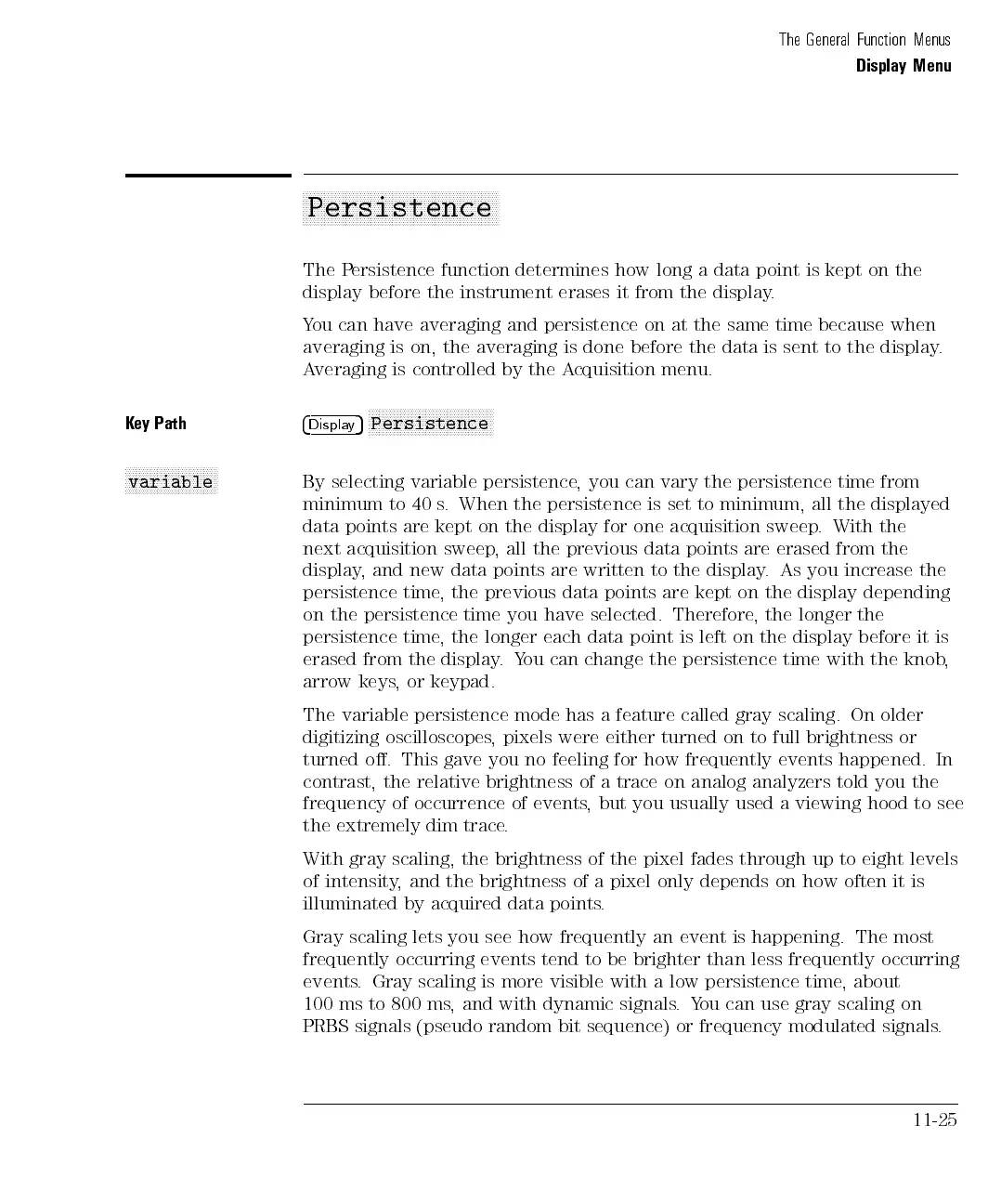The General Function Menus
Display Menu
aaaaaaaaaaaaaaaaaaaaaaaaaaaaaaaaaaaaaaaaaaaaaaaaaaaaaaa
Persistence
The Persistence function determines how long a data point is kept on the
display before the instrument erases it from the display.
You can have averaging and persistence on at the same time because when
averaging is on, the averaging is done before the data is sent to the display.
Averaging is controlled by the Acquisition menu.
K
ey
Path
4
Displa
y
5
NNNNNNNNNNNNNNNNNNNNNNNNNNNNNNNNNNN
Persistence
N
N
N
N
N
N
N
N
N
N
N
N
N
N
N
N
N
N
NN
NN
NN
NN
variable
By selecting
variable
persistence
,
you
can
vary
the
persistence
time
from
minimum
to
40
s
.
When
the
persistence is
set to
minimum,
all
the
displayed
data
points
are
kept
on
the
display
for one
acquisition sweep
.
With
the
next
acquisition
sweep
,
all
the
previous
data
points
are erased
from
the
display
,
and
new
data
points
are
written
to
the
display
.
As
you
increase
the
persistence
time
,
the
previous
data
points
are
kept
on
the
display
depending
on
the
persistence
time
you
have
selected.
Therefore
,
the
longer
the
persistence
time
,
the
longer
each
data
point
is
left
on
the
display
before
it
is
erased
from
the
display
.
Y
ou
can
change
the
persistence
time
with
the
knob
,
arrow keys
,or
keypad.
The variable
persistence mode
has a
feature
called
gray
scaling.
On
older
digitizing oscilloscopes
, pixels
were either
turned
on
to
full
brightness
or
turned o.
This gave
you no
feeling
for
how
frequently
events
happened.
In
contrast, the relative brightness of a trace on analog analyzers told you the
frequency of occurrence of events, but you usually used a viewing hood to see
the extremely dim trace.
With gray scaling, the brightness of the pixel fades through up to eight levels
of
intensity
,
and
the brightness
of
a
pixel
only
depends
on
how
often
it
is
illuminated
by
acquired
data
points.
Gray scaling
lets
you
see
how
frequently
an
event
is
happening.
The
most
frequently occurring events tend to be brighter than less frequently occurring
events. Gray scaling is more visible with a low persistence time
, about
100 ms to 800 ms
, and with dynamic signals
.Y
ou can use gray scaling on
PRBS signals
(pseudo random bit sequence) or frequency modulated signals
.
11-25

